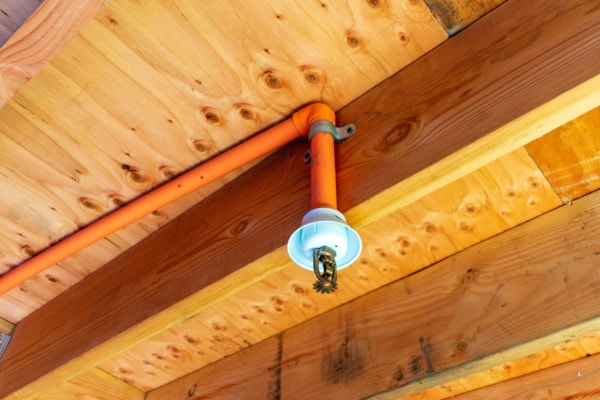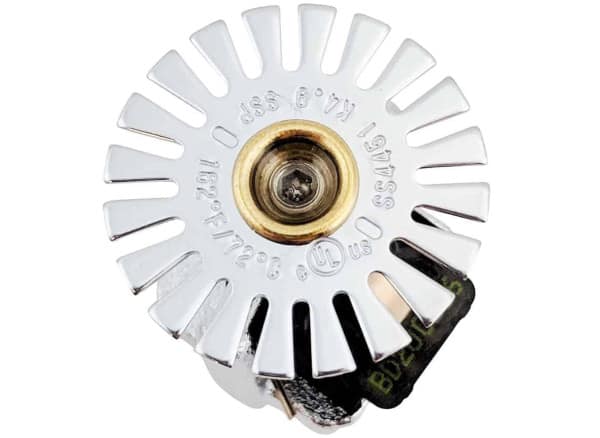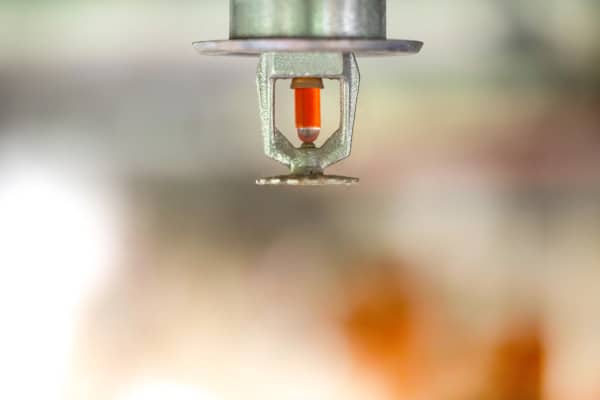Why people choose to put fire sprinklers in a home—and some practical advice for finding an installer in an evolving industry
Fire sprinklers save lives. They protect property and make communities safer. Those are reasons enough to retrofit a residential fire sprinkler system, of course—but they aren’t the whole story. A patchwork of evolving trends also contributes to the decision to go with sprinklers.
This blog covers the benefits of sprinklers, including some you may not have considered, as well as the commonsense steps needed for finding a good contractor to install them.
The essential benefits of residential fire sprinklers
Most fire deaths occur in the home, and residential fire sprinklers are the best defense against death, injury, and property damage. “While overall US fire deaths have dropped dramatically in the past 40 years, the death rate per 1,000 home fires actually increased in 2016 compared to 1980.”
Smoke is the primary cause of death. But because most modern homes use lightweight synthetic construction materials and synthetic furnishings, the average time available to escape a fire has dropped significantly because of “flashover.”
Research has shown that flashover can occur in less than five minutes and as little as two. It is “the sudden involvement of a room or an area in flames from floor to ceiling caused by thermal radiation feedback.” Essentially, when enough fuel is present, the fire expands rapidly and no life can survive in the area.
This video provides a good demonstration of the phenomenon:
Fire sprinklers are the essential defense against fire and flashover in the home, as they are the only automatic, active fire protection option.
Smoke detectors are crucial and give many people time to escape, and fire extinguishers can effectively control small fires. Even the simple step of closing your bedroom door at night provides passive fire protection that could save a life.
But whether you are at home or away, sleeping or awake, sprinklers automatically do something to protect life and property. Consider these stats from the National Fire Protection Association’s (NFPA) 2019 report on “Home Structure Fires:”
Home fire sprinklers can control a fire until help arrives, even when the occupants are unable to act. Fire sprinklers were present in only 7 percent of reported home fires in 2012–2016. The death rate of 1.1 per 1,000 reported home fires was 85 percent lower when sprinkler systems were present than the 7.7 deaths per 1,000 reported home fires without any automatic extinguishing systems (AES).
Fire sprinklers activated “94 percent of the time” and controlled the fire 97 percent of the time. And in “89 percent of home fires with operating sprinklers, only one” did the job.
Those numbers are reasons enough to retrofit sprinklers, as the ROI of preventing death and injury is incalculable. But let’s take a look at some other reasons.
Property damage, insurance savings, and where you live
Residential sprinklers are fast response sprinklers, which have a “response-time index (RTI)” of 50 (meter-seconds)1⁄2 or less. This means that they activate … well, fast.
The goal is saving lives by, as NFPA 13: Standard for the Installation of Sprinklers defines it, “enhance[ing] survivability in the room of fire origin.” Essentially, by deploying quickly and wetting elements in a room—the walls, furnishings, etc.—they deprive a fire of the fuel sources it needs to grow and achieve flashover. Again, these sprinklers’ primary objective is life safety.
But they also are pretty good at protecting property and minimizing both fire and water damage. NFPA Research found the average property loss per incident was $6,900 “when sprinklers were present” which was “63 percent lower than the average $18,800 loss per fire without” them.
There is also the water-damage angle. How the heck do water-spraying fire sprinklers reduce water damage, you ask? Well, it’s because they spray a lot less of it than fire hoses. A couple of residential sprinklers can put out roughly 26 gallons per minute, whereas hoses can spray over 150 gallons per minute. And since a single sprinkler usually controls a fire, there is a good chance those fire department attack hoses will never deploy.
Beyond less property damage, there are insurance savings. Insurance companies often provide discounts on homeowners policies for a variety of things that make the property safer and more secure, from reinforced doors and locks to storm shutters and security systems. Fire sprinklers may be one of the moves that can get you a break on a premium.
Insurers may be willing to discount insurance policies by about 7% in residences with fire sprinklers, according to numbers compiled by the Fire Protection Research Foundation. That adds up to at least a couple thousand dollars over the span of a mortgage, which goes a long way toward defraying the cost of a retrofit. Speaking of which …
The cost to install or retrofit a fire sprinkler system
Sprinklers may be less expensive than you think. Current, nationwide numbers are hard to come by, especially since the costs vary from state to state based on which ones mandate sprinklers in new construction and how common these systems are.
But as a rough estimate, a homeowner can expect to pay somewhere between $1.01 to $3.21 dollars per square foot, using inflation-adjusted totals from 2013 data. That said, this can vary quite a bit.
First, there is your water supply. If you are in an area where you have adequate city water pressure, it removes the need to use a tank or rely on an underpressurized well that may require a pump. Then, there are the pipe options. Fire sprinklers can be fed by metal pipes, such as copper or steel, or two types of thermoplastic pipe: CPVC or PEX.
Both thermoplastics are generally cheaper than metal options in a residential fire sprinkler system, and PEX may be the most efficient choice, since these pipes are actually flexible tubes that can speed installation. PEX systems also typically synergize with a home’s existing plumbing system, which means the water does not stagnate in the pipe—this can omit the expense of installing a backflow preventer that protects the water supply. The bottom line: costs will vary based on which system you choose based on what makes sense for your home.
Then there is location. For example, if you are looking to install sprinklers in California, where installations are mandated in new homes, you can expect to easily find a qualified sprinkler contractor who must compete with other providers. This cost may be significantly lower than areas that do not have many installers.
But as a rough estimate, it is a good starting point to assume that a residential sprinkler system will cost between about $2,000 to $6,000 to retrofit most homes in the U.S. Again, this varies based on system type, along with factors like the area’s average temperature, square footage, the local water supply, and the market demand for fire sprinkler contractors in the area.
Practical considerations for finding a residential fire sprinkler system installer
The variance in demand by area can significantly impact how easy it is to find a qualified fire sprinkler installer at a good price. California, Maryland, and DC have all mandated fire sprinkler installations in new homes, which usually means many well-qualified contractors in those areas.
But in some areas, sprinkler installers are harder to come by. And even when they are in good supply, many professionals are geared toward installing more complex and costly commercial systems due to laws that have required them in buildings for decades.
This doesn’t mean these commercial specialists can’t install a home sprinkler system. The rules in NFPA 13D: Standard for the Installation of Sprinkler Systems in One- and Two-Family Dwellings and Manufactured Homes are more forgiving than NFPA 13, the commercial installation standard. It’s that many contractors are already backlogged on commercial work, and they may achieve a lower return for completing smaller residential jobs.
Don’t lose hope if you are in an underserved area, however! The residential sprinkler installation industry is still growing rapidly, and many parts of the U.S. do have plenty of qualified and willing installers. And certain states and organizations are training more types of professionals and expanding the pool of qualified installers.
For example, Connecticut licenses plumbers to work on multipurpose residential sprinkler systems if they have been “issued a P-1 license and have been certified as completing a multipurpose residential fire sprinkler systems course approved by” the Department of Consumer Protection. Alabama has a similar program that only covers installation. And the National Fire Sprinkler Association (NFSA) offers courses like this one to get trade professionals certified and licensed.
Thus, your residential fire sprinkler contractor might not be a fire protection specialist at all. And many residential systems—specifically, the multipurpose PEX set-ups—integrate with a home’s plumbing anyway.
The benefits of home fire sprinklers are clear and compelling—here are the first steps to get them
Eighty-five percent fewer deaths. Sixty-three percent lower damage. Insurance discounts. And the peace of mind that your property and family are protected from fire, regardless of whether you are home. Fire sprinklers are a fantastic, reliable, and relatively inexpensive technology that vastly increases safety.
If you have made the decision to retrofit fire sprinklers or you are exploring the possibility, the first steps mirror looking for any type of contractor. Use a search engine or the yellow pages to look for professionals in your area. Evaluate reviews, if they are available. Once you get in touch with someone, ask them for references and whether they do residential installations. If they do, inquire about their specific experience with home sprinklers. Check with your state professional licensing website to see which, if any, licenses are required and verify that a potential contractor is allowed to install a system.
If you become stuck and need more options, you can contact the National Fire Sprinkler Association or the American Fire Sprinkler Association (AFSA) for a referral to a professional in your area. The Home Fire Sprinkler Coalition also provides resources to help residents understand these systems and their options.
Finally, when you need some residential fire sprinkler system parts for installation or maintenance, be sure to check out QRFS’s selection of residential sprinklers, residential risers, cover plates, and more.
If you have questions or need help finding an item, call us at +1 (888) 361-6662 or email support@qrfs.com.
This blog was originally posted at blog.qrfs.com. If this article helped you, check us out at Facebook.com/QuickResponseFireSupply or on Twitter @QuickResponseFS.






My home is 2700 sq ft with polybutylene piping in fire sprinkler system. Need to redo or put in new system. Also garage about 500 sq ft. Ideas.?
Thanks
I hear it can cost 10’s of thousands of dollars. Really?..
Marilyn – The costs can vary based on your location. Your best bet is to contact a qualified fire sprinkler installer in your area and they can provide an estimate and ideas on systems. (Better yet, contact several if possible!)